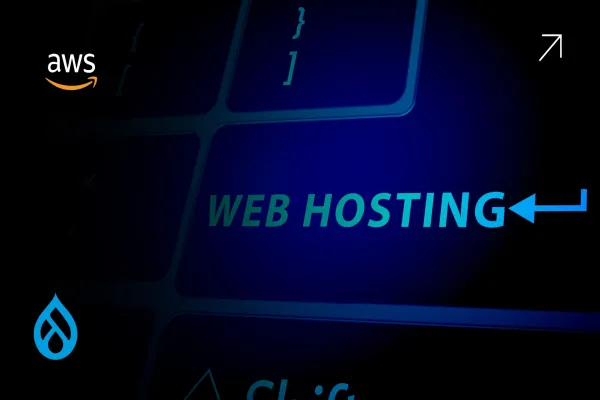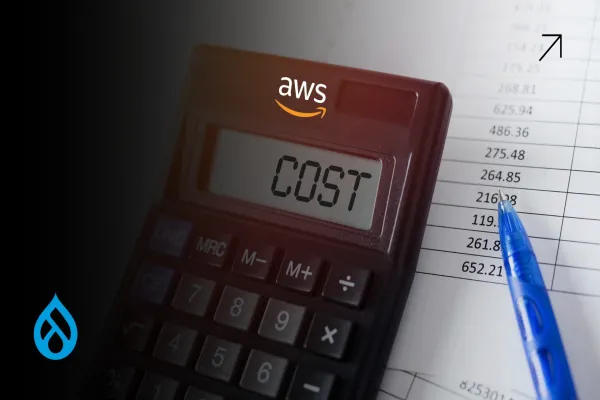Why Cost Efficiency Is Now a Core Skill for Drupal on AWS
Building fast, scalable, and secure Drupal applications used to be enough. But in 2025, cost efficiency is no longer optional—it’s a core competency. Especially if you’re running Drupal on AWS, the difference between a well-architected setup and a bloated one can mean thousands of dollars wasted every year.
Whether you’re managing a small publishing platform or a complex enterprise CMS, the way you structure your infrastructure has a direct impact on performance and cost. This blog breaks down the top 10 AWS services that every Drupal developer should use to run smarter, leaner, and cheaper deployments of Drupal on AWS, without sacrificing capability.
1. Amazon EC2 (Elastic Compute Cloud)
Still the backbone of many Drupal on AWS builds, EC2 lets you launch and manage virtual servers with full control. But cost efficiency here depends on instance selection. Use Graviton-based t4g or c7g instances for performance at a lower price point. For production environments, apply Reserved Instances or Savings Plans to lock in discounts.
2. Amazon RDS (Relational Database Service)
Drupal’s database layer runs best when optimized for performance and uptime. RDS makes this easier, but without tuning, it’s a cost trap. Choose gp3 storage, disable Multi-AZ in staging, and turn on performance insights to catch inefficient queries. Use read replicas only when truly necessary.
3. Amazon S3 (Simple Storage Service)
S3 should be your default for all file and media storage in Drupal on AWS. Integrate directly with Drupal to serve images, PDFs, and documents. Apply lifecycle rules to automatically move infrequently accessed files to Glacier or Infrequent Access tiers, cutting down your long-term storage bills.
4. Amazon CloudFront
Serving media or static assets? CloudFront delivers global performance boosts and reduces origin traffic costs. Configure long TTLs for Drupal’s CSS, JS, and image files, and pair with Brotli compression for added savings. It’s a must-have CDN layer for serious cost optimization.
5. AWS Lambda
Offload non-critical tasks- cron jobs, image processing, webhook listeners—to Lambda. It reduces the load on your EC2 or Fargate containers and only charges per millisecond of execution. For Drupal on AWS, this means fewer servers, lower idle costs, and smoother background operations.
6. Amazon ElastiCache (Redis or Memcached)
Caching is the single most impactful performance upgrade you can make in Drupal. With ElastiCache, you integrate Redis or Memcached to cache queries, session data, and even full pages. Less load on the DB and app tier means smaller servers and reduced compute bills.
7. Amazon ECS with Fargate
If you’re ready to go containerized, ECS with Fargate removes the need to manage EC2 instances entirely. You only pay for the exact resources your Drupal containers use. It auto-scales with traffic, and when combined with spot pricing or Savings Plans, it’s among the most efficient ways to run Drupal on AWS in 2025.
8. AWS CloudWatch
Every cost-efficient system is also observant. CloudWatch helps you track CPU, memory, request latency, and custom application metrics in real time. Set alerts for when thresholds spike, and integrate with dashboards to see where your Drupal on AWS stack is overprovisioned or underutilized.
9. AWS Cost Explorer
This isn’t just for finance teams. Developers building Drupal on AWS should be using Cost Explorer to track spend by service, tag, or resource. It gives real-time insights and monthly trends so you can predict when architecture changes are needed; and avoid surprises on the next bill.
10. AWS IAM (Identity and Access Management)
Security and cost control go hand in hand. Use IAM to restrict who can spin up instances, edit configurations, or modify database settings. Many runaway costs on Drupal on AWS happen when developers have too much access without guardrails.
Conclusion: Drupal on AWS Only Pays Off When It’s Built for Cost Efficiency
Running Drupal on AWS gives you flexibility, scale, and power, but only if you leverage the right tools. These ten AWS services are not just helpful; they’re essential for every Drupal developer serious about cost efficiency in 2025.
You don’t need to downgrade performance to save money. You need to architect with intention. From compute and caching to monitoring and access control, each AWS service listed here plays a role in lowering costs while boosting the performance of your Drupal application.
If you’re still treating AWS as just a hosting provider, it’s time to shift your mindset. With the right mix of tools and strategy, Drupal on AWS can deliver enterprise-grade results, without the enterprise-grade bill.





